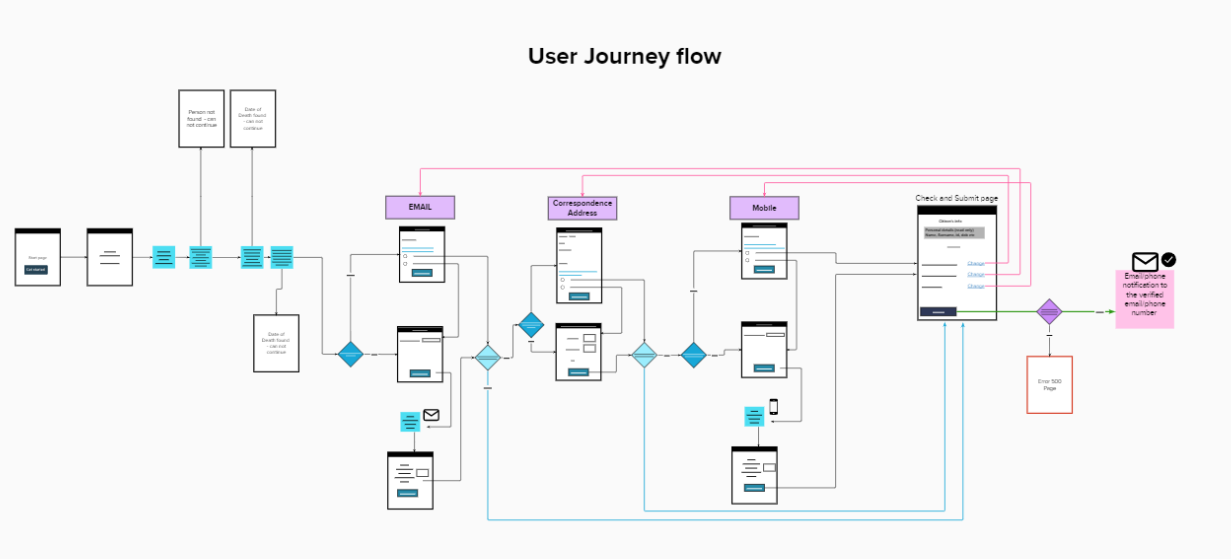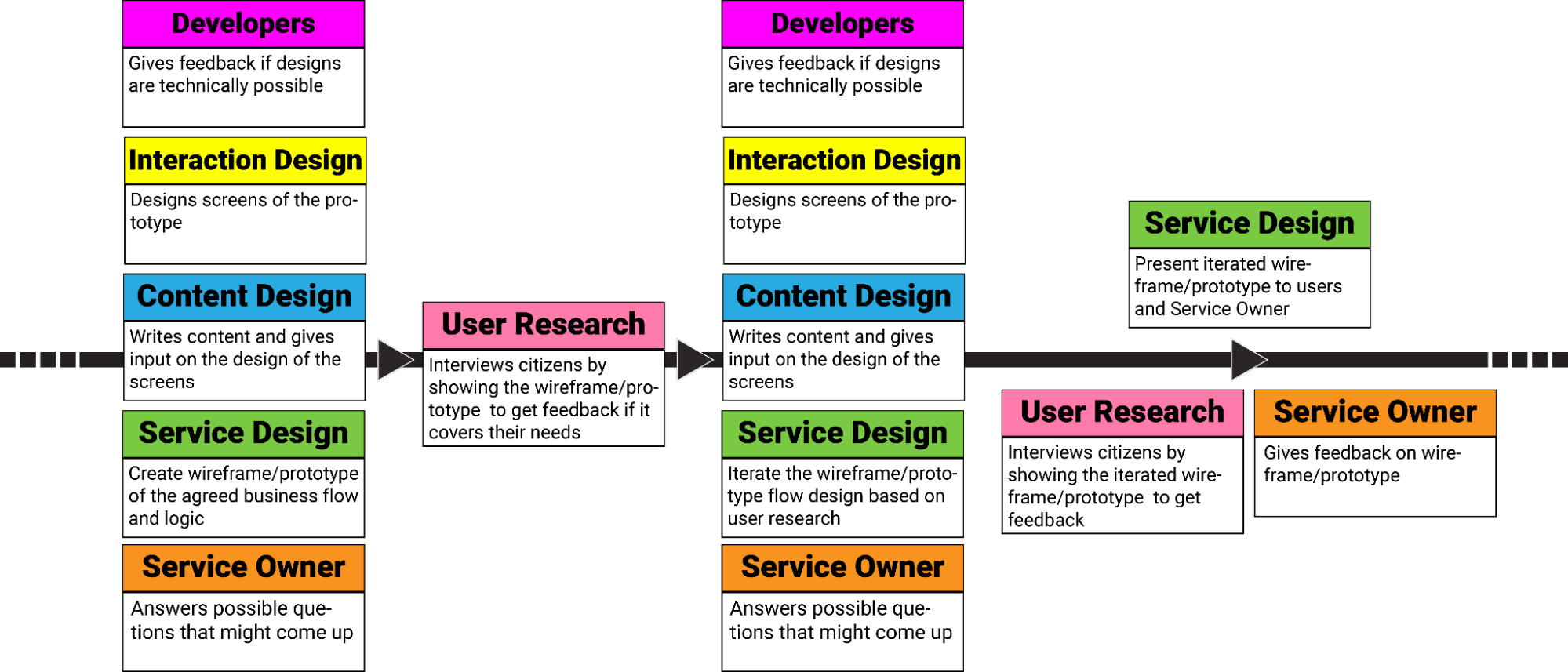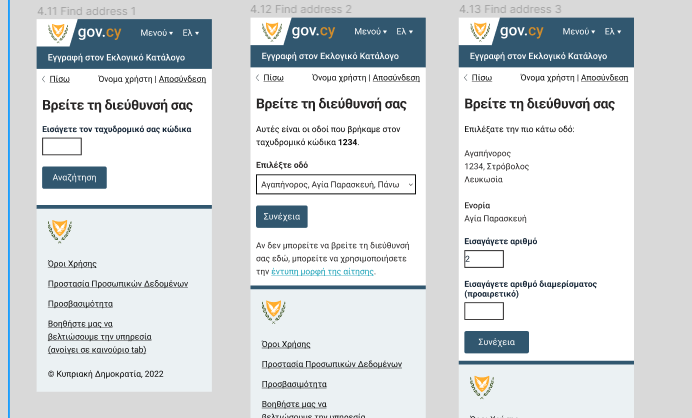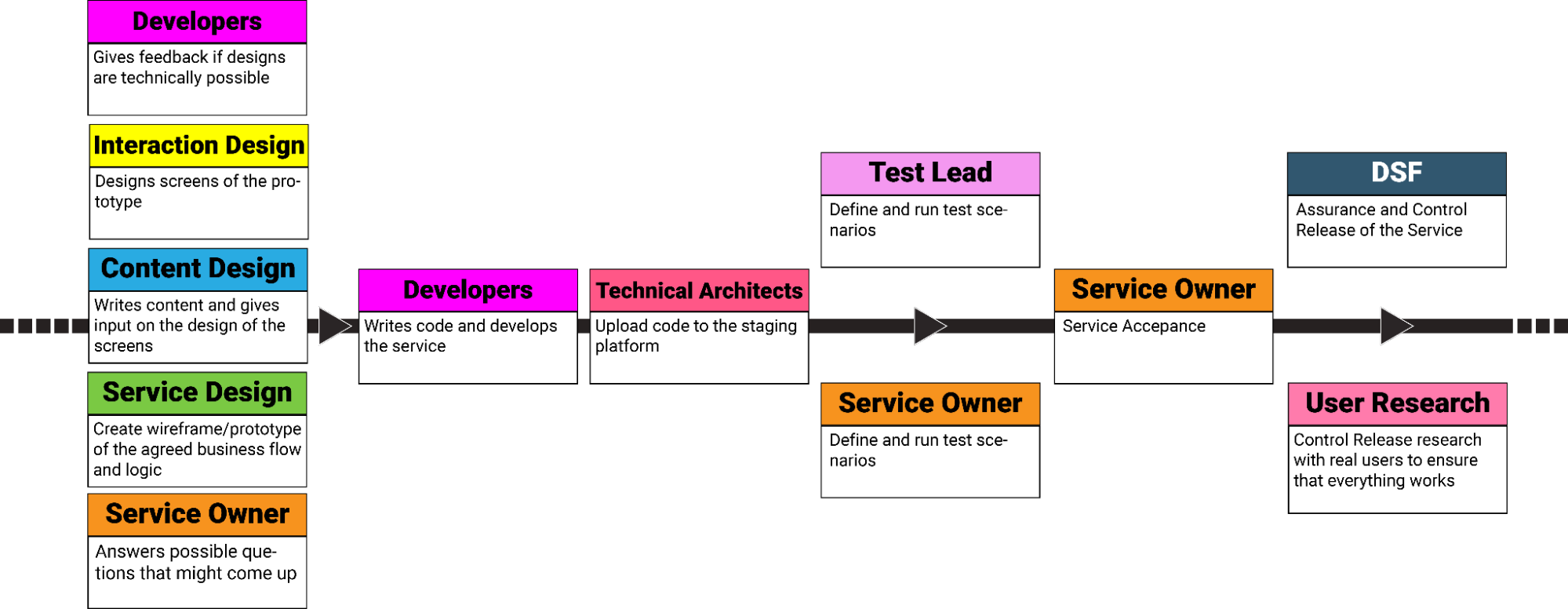Service Development Workflow
22/11/22 | A. Understanding User Needs | All Guidelines and Documentation | B. Leading Agile TeamsVersion 1.0
Version control table
| Version | Date | Comments |
| 0.1 | 24/10/2022 | Initial Draft |
| 1.0 | 22/11/2022 | Published Document |
Introduction
The purpose of this document
The Service Development Workflow document describes the high-level process that can be followed to develop a good public-facing government service.
Teams
| Team | Responsibility |
| Service Owner | The decision-making authority to deliver on all aspects of a project |
| User Researchers | Help to learn about the people who will use the service. This will help to design and build a service that works well for all users, including people who need additional support |
| Service Designers | Design the end-to-end journey of a service. They help users complete their goals, and the government deliver its policy intent. |
| Content Designers | Make sure that the users understand the service. |
| Interaction Designers | Work out the best way to let users interact with services, in terms of both overall flow and at the level of individual design elements. |
| Developers | Build accessible software with a focus on what users need from the service |
| Technical Architects | Decide on technical requirements and improvements for software development and web operation |
| Test Lead | Test the functionality of the service by running all possible scenarios as well as accessibility testing. |
Service Development Workflow
The Digital Services Factory service building process delivers services through four distinct phases:
- Discover
- Design
- Build
- Live Running

By dividing the delivery of a service into these four phases, we promote the following benefits:
- confidence that we’re solving the right problems, in the right order, and in the right way
- reduce the risk of delivering a service which does not meet user needs and deadlines
- deliver value to users, early
- the ability to change easily and frequently
- autonomous, high-performing teams
Team involvement throughout the different phases
Discover phase

The Discover phase starts with the Service Owner stating clearly the scope and what they want the service to achieve as well as who will use the service and how it will benefit them.
The Service Design team starts interviewing the Service Owner and other internal business users to discover the current business flow, and any legal constraints, map out the “as-is” process and look for opportunities to improve it.
At the same time, the User Research team interviews citizens, based on the Service Owner’s description of the user demographic, to understand their needs. The Service Design team can observe the citizen interviews for a better and more holistic understanding of the service.
Based on all interview findings, the Service Design team creates graphic user journey flow designs of all possible scenarios.

The Service Design team presents the flow designs to the Service Owner for approval.
Design Phase

Upon approval of the journey flow designs, the Service, Content, and Interaction Design teams in collaboration with the Developers begin creating wireframe/prototype screens based on different hypothesis scenarios for the service. During this process, the Service Owner answers any possible questions that might come up.
Upon the completion of the creation of the wireframe/prototype screens, the User Research team runs interview sessions with citizens to get feedback regarding their understanding of the service and test different ideas.
Based on the user research findings, the Service, Content, and Interaction Design teams in collaboration with the Developers iterate the wireframe/prototype screens which are given back to the User Research team to run more interview sessions with citizens.
The above process will be repeated several times until a prototype that works for users consistently is identified. The final wireframe/prototype screens are given to the Developers, in collaboration with the Interaction Design team, to begin building a working prototype.

The working prototype is then presented to the Service Owner and the citizens by the Service Design team and the User Research team respectively, for further research sessions.
Build Phase

Once we are confident that we’re building the right thing, based on user research findings, the final iterated service design is given to the Developers to begin building the service and in collaboration with the Technical Architects to upload the code on the staging platform.
The Service Owner, in collaboration with the Test Lead, defines and runs the test scenarios to check the functionality and accessibility of the service.
Once all tests are running successfully, the Service Owner accepts the service so it can continue for Assurance and Control Release to a pilot phase where the User Research team observes real users to ensure that everything is working.
Live Running
Once we have piloted the service and are confident we can run it at scale, we can release the service to all potential users.
We make sure:
- The service team can sustain its learning and iteration, even once the service is live
- Support staff can cope with new users who might struggle to use the service in ways we have not foreseen
- We continuously iterate and improve the service, guided by the insight we have gained from our work in the previous phases, as well as our performance analytics and ongoing user research
- Adopt a maintenance approach to the service